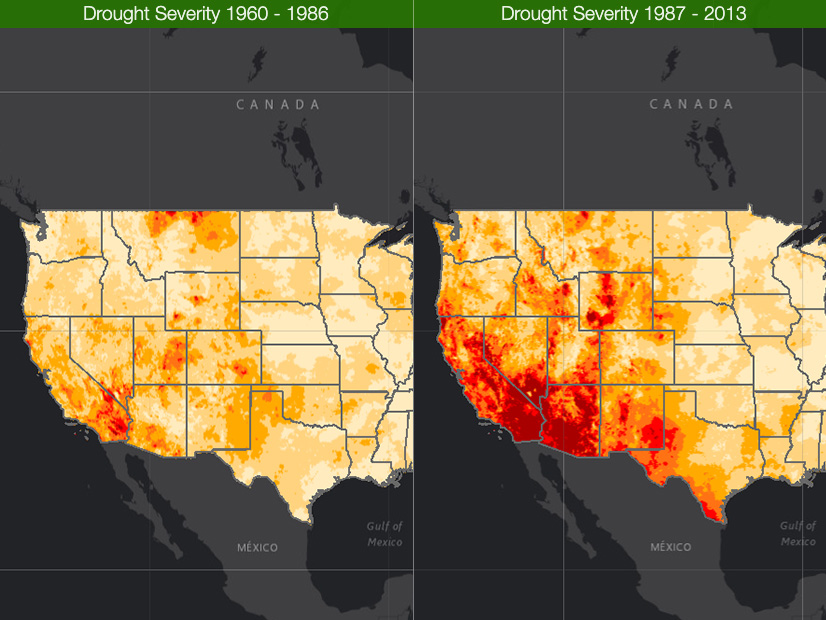A drought in the West is cutting into hydropower supplies that are important for summer reliability and threatening to have longer-term effects on the region’s grid, panelists said Friday in a session hosted by the United States Energy Association.
In its short-term energy outlook in June, the U.S. Energy Information Administration predicted the Western Interconnection’s hydroelectric production will decrease 9% from last year, the lowest level since 2015, EIA senior economist Tyler Hodge said.
“When you throw in things like extreme weather events … it could really add a lot of uncertainty,” Hodge said.
Lower hydro generation could increase reliance on natural gas generation and raise prices for natural gas, he said. If California or other states require additional imports to offset the reduction in hydropower, it could cause transmission congestion, he said.
The Pacific Northwest and California account for most of the hydroelectric generation in the nation, and both areas are experiencing dryer-than-average conditions.
Snow water content in California peaked at 60% of normal in 2021 after a similarly dry winter last year, CAISO said its annual summer resource assessment. The average water level in large reservoirs was 70% of normal earlier this year. (See CAISO Could See More Outages this Summer.)
CAISO used Northwest River Forecast Center projections to assess hydropower imports this summer from the Pacific Northwest. The hydrologic center predicted reservoir storage at The Dalles Dam on the Columbia River, a key indicator, will be 89% of average from April to September.
Hydropower accounts for about 15% of California’s summer peak capacity, making it the second largest generation source after natural gas, which fills 57% of the state’s resource needs.
FERC focused on the California hydropower crisis in its Summer Energy Market and Reliability Assessment. Snowpack, the state’s main source of dry-season water, was critically low at 6% of normal levels May 11. Earlier-than-normal runoff will worsen the situation, FERC said. (See FERC Summer Assessment Spotlights Western Drought Risks.)
CAISO has said low in-state hydro could cause problems meeting peak demand this summer. In Friday’s meeting, CEO Elliot Mainzer said the situation adds volatility to resource planning and needs to be accounted for. Whether drought conditions will abate or continue is a big unknown, he said.
“The uncertainty … is absolutely something that we now need to bake into our planning,” Mainzer said.
Hotter, dryer conditions exacerbate the water shortage, he said. Severe heat waves in the West led to energy emergencies in California and Nevada last summer, and heat waves have already impacted Western states this year.
Triple-digit temperatures and strained resources caused CAISO to issue a warning in June. Portland, Ore., hit a record high of 112 degrees Fahrenheit on Sunday; a similar temperature was expected Monday, the National Weather Service said.
“The associated heat is the other variable that is really putting a lot of stress on the grid at the moment,” Mainzer said.
“Under normal conditions, even on a day when it’s really hot in California, but it’s not super hot in Portland or Salt Lake City or Phoenix, our grid is typically OK,” he said. “But when it gets simultaneously hot and dry in all these different regions, the amount of power available to California through imports … puts a lot of stress on the system.”



